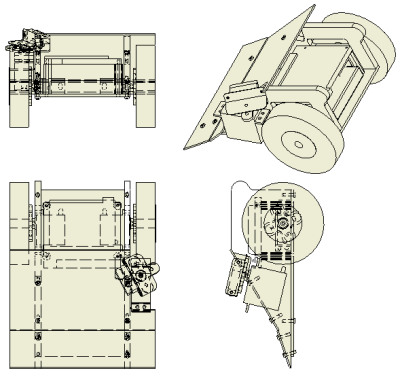
Scientists Have Created an Ideal Colleague - a Robot That Performs Hundreds of Repetitive Experiments.
The robot, called Adam, is the first machine to have independently "discovered new scientific knowledge".
It has already identified the role of several genes in yeast cells, and is able to plan further experiments to test its own hypotheses.
The UK-based team that built Adam at Aberystwyth University describes the breakthrough in the journal Science.
Ross King from the department of computer science at Aberystwyth University, and who led the team, told BBC News that he envisaged a future when human scientists' time would be "freed up to do more advanced experiments".
Robotic colleagues, he said, could carry out the more mundane and time-consuming tasks.
"Adam is a prototype but, in 10-20 years, I think machines like this could be commonly used in laboratories," said Professor King.
Robotic planning
Adam can carry out up to 1,000 experiments each day, and was designed to investigate the function of genes in yeast cells - it has worked out the role of 12 of these genes.
Biologists use the yeast cells to investigate biological systems because they are simple and easy to study.
"When you sequence the yeast genome - the 6,000 different genes contained in yeast - you know what all the component parts are, but you don't know what they do," explained Professor King
The robot was able to work out the role of the genes by observing yeast cells as they grew.
It used existing information about the function of known genes to make predictions about the role an unknown gene might play in the cell's growth.
It then tested this by looking at a strain of yeast from which that gene had been removed.
"It's like a car," Professor King said. "If you remove one component from the engine, then drive the car to see how it performs, you can find out what that particular component does."
Expensive assistant
Duc Pham from the Manufacturing Engineering Centre at Cardiff University described the robot scientist as "a clever application of robotics and computer software".
But, he added, "it's more like a junior lab assistant" than a scientist. "It will be a long time before computers can replace human scientists."
Professor King agreed that the robot was in its early stages of development.
Professor Ross King explains how robots Adam and Eve work
"If you spent all of the money we've spent on Adam on employing human biologists, Adam probably wouldn't turn out to be the cost-effective option," he said.
"But that was the case with the first car. Initially, the investment in the technology wasn't as cost-effective as sticking with horses."
He also pointed out that his robotic associate is able to express scientific findings in a clearer way than humans.
"It expresses its conclusions in logic," he said. "Human language, with all its nuances, may not be the best way to communicate scientific findings." I remember back when I began building my very first robot. I had been wanting to build robots for years, since 3rd grade actually. I was completely fascinated by them. But unfortunately I never had any outside influence to do this - none. Not a single person I knew understood what even a resistor was good for, even through highschool! No one to help me, no one to explain anything, no guidance from teachers, no SoR either! I bought robot like toys, dabbled with electronics, but didn't have a clue on where to start. Nature, failed by nurture.
The same team is developing another, more advanced robot scientist called Eve, which is designed to screen new drugs.
No comments:
Post a Comment